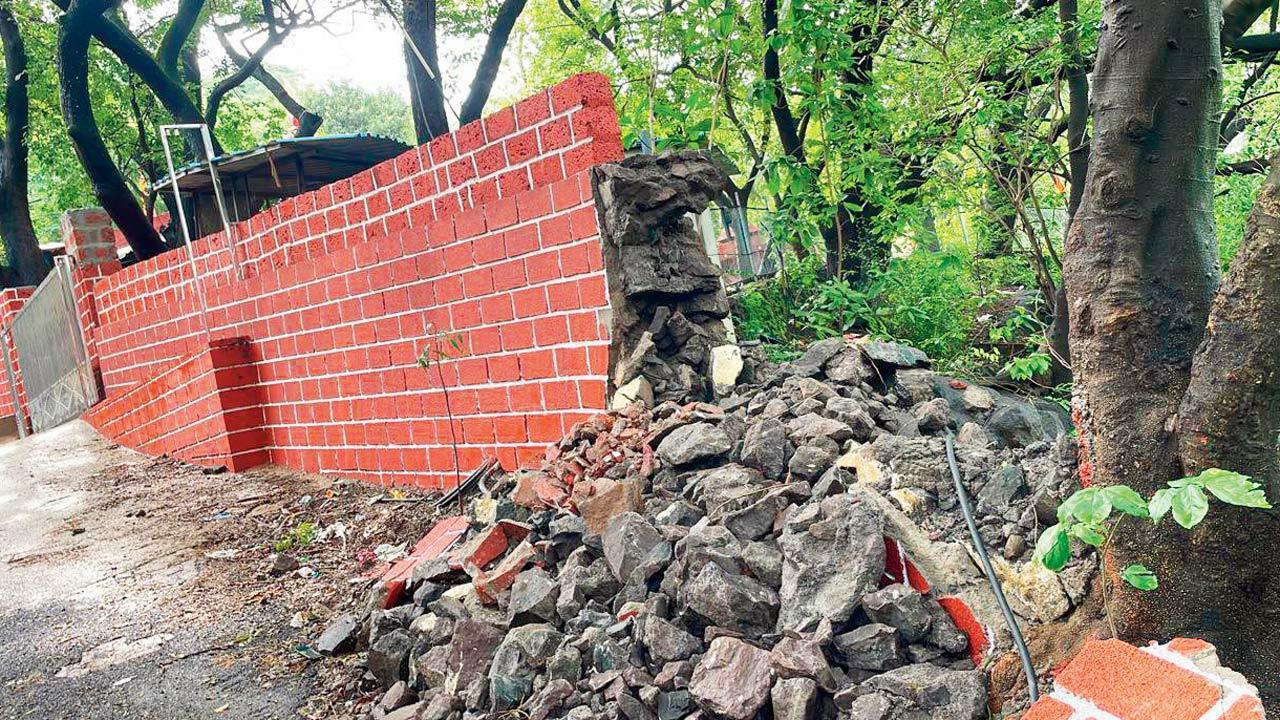The structures were spread over 2.3 lakh square feet on Belapur and Parsik Hills, posing a threat to life and property

Demolition underway at one of the religious structures in Belapur
The Maharashtra government has directed the City and Industrial Development Corporation (CIDCO) and Navi Mumbai Municipal Corporation (NMMC) to demolish the 30 illegal religious structures on the landslide-prone Belapur and Parsik hills which occupied 2.3 lakh square feet.
ADVERTISEMENT
The state chief secretary has filed an affidavit to this effect at the Maharashtra State Human Rights Commission (MSHRC) which has taken suo motu notice of the media reports which spoke of possible dangers to the lives and properties due to landslides.
At its third hearing on Monday, the commission closed the suo motu case considering the solemn affidavit on oath submitted by Subrao Narayan Shinde, joint secretary in the Urban Development Department (UDD), on behalf of the chief secretary.
Shinde said the Home Department, on UDD’s request, has also directed the Navi Mumbai police commissioner to provide adequate protection for the demolition.
NGO NatConnect Foundation, which launched an awareness campaign and filed three affidavits at the commission, pointed out that the soil on the hills is loose and hence the hills are landslide prone. NatConnect director B N Kumar highlighted the Wayanad and Irshalwadi disaster as hundreds of people congregate at these religious structures, some of which are built on the hill slopes.
He argued that some structures occupying over 20,000 sq ft to 40,000 sq ft have built halls to accommodate up to 2,000 people, which is highly risky.
“The festival season has begun, and devotees are bound to visit the temples. We fear their lives will be at stake. Moreover, there are over 600 houses below the Belapur hill,” Kumar said.
The issue has persisted for nearly a decade since the Kalpataru Cooperative Housing Society first filed a complaint with CIDCO. Now, CIDCO has been directed to take action in line with the Supreme Court's ruling on illegal religious structures. MSHRC, comprising of Justice K K Tated and member M A Sayeed, stated that NatConnect is free to return to the rights body in case of future violations.
According to the NGO NatConnect Foundation, when CIDCO’s counsel attempted to make a statement, Justice Tated said, “The entire case arose due to CIDCO’s inaction. What is there for you to say now?” He then directed both CIDCO and NMMC to comply with the government’s directive.
Kumar noted that CIDCO began the demolition process by razing a compound wall and stairs of a religious structure but halted due to concerns over potential landslides
“CIDCO’s controller of unauthorised constructions brought in two JCB machines, but work was halted due to heavy rain. Weather permitting, the demolition will resume with police protection,” an official said.
The commission also dismissed intervention applications from a charitable trust occupying 1,200 sq ft and another occupying 250 sq ft, both of which pleaded for protection while their regularisation applications were pending.
CIDCO had served demolition notices to these trusts and other unauthorised structures.
2.3 l sq ft
Area covered by these religious structures
 Subscribe today by clicking the link and stay updated with the latest news!" Click here!
Subscribe today by clicking the link and stay updated with the latest news!" Click here!







